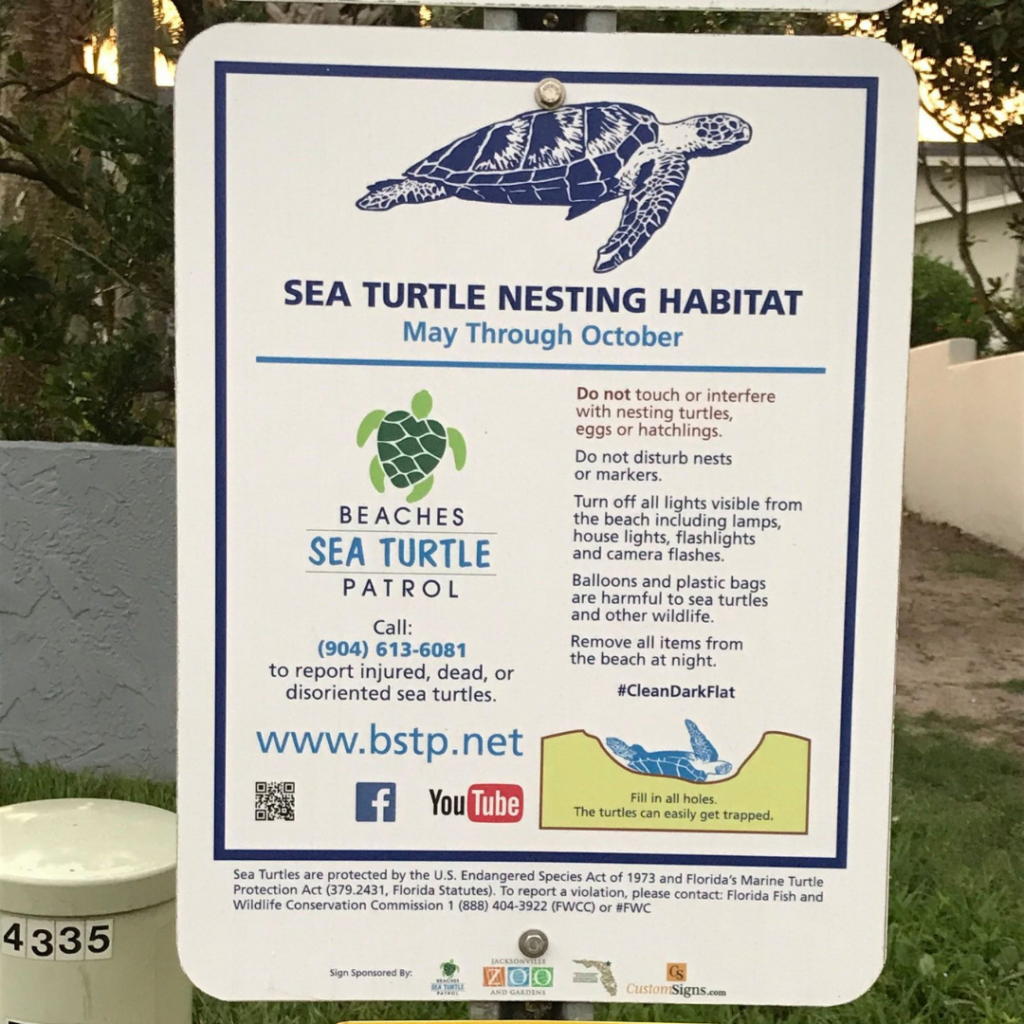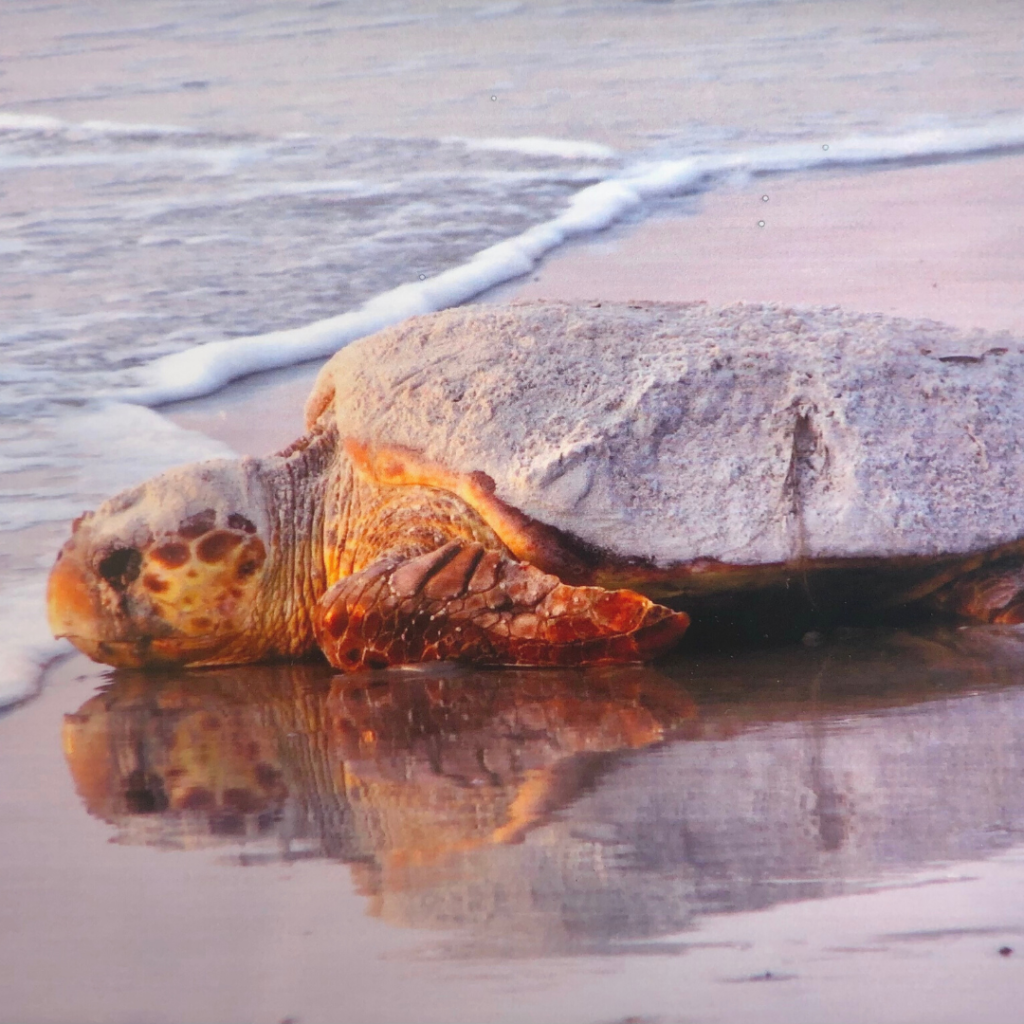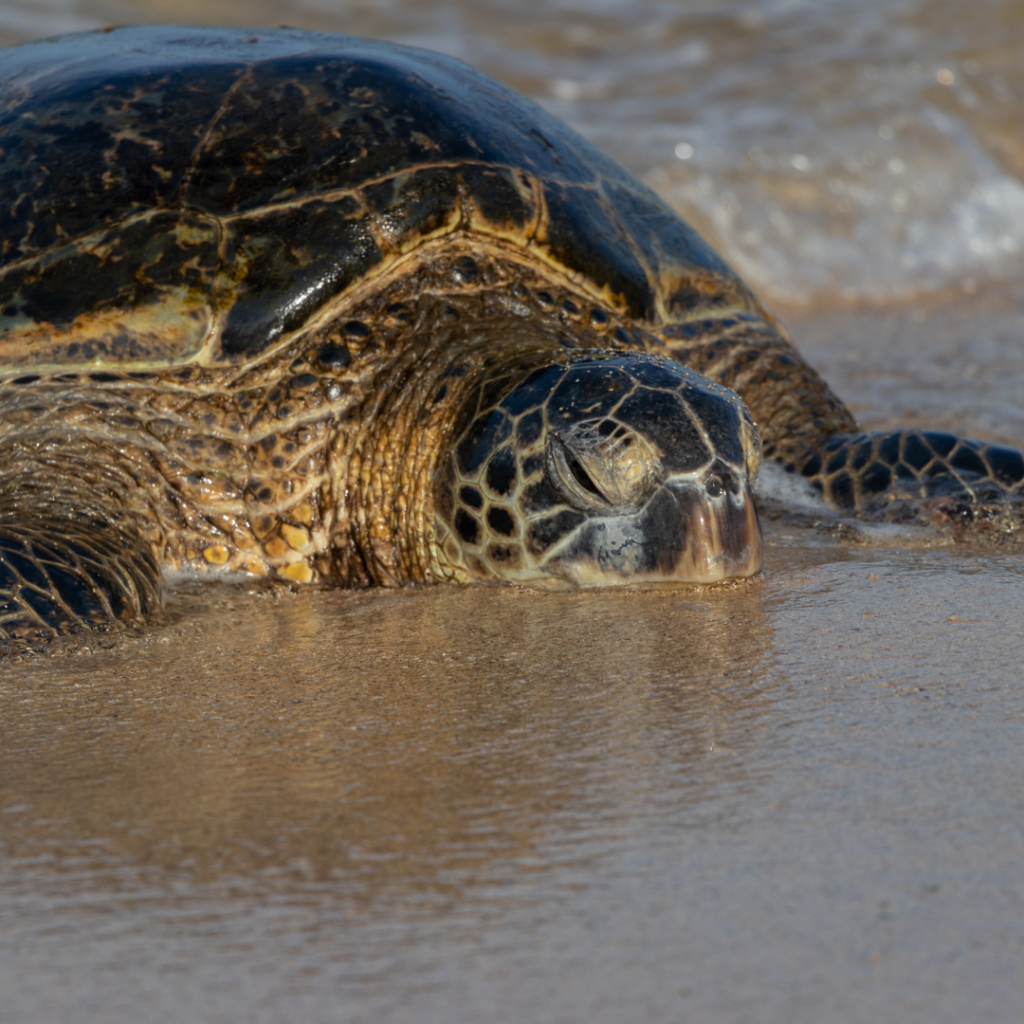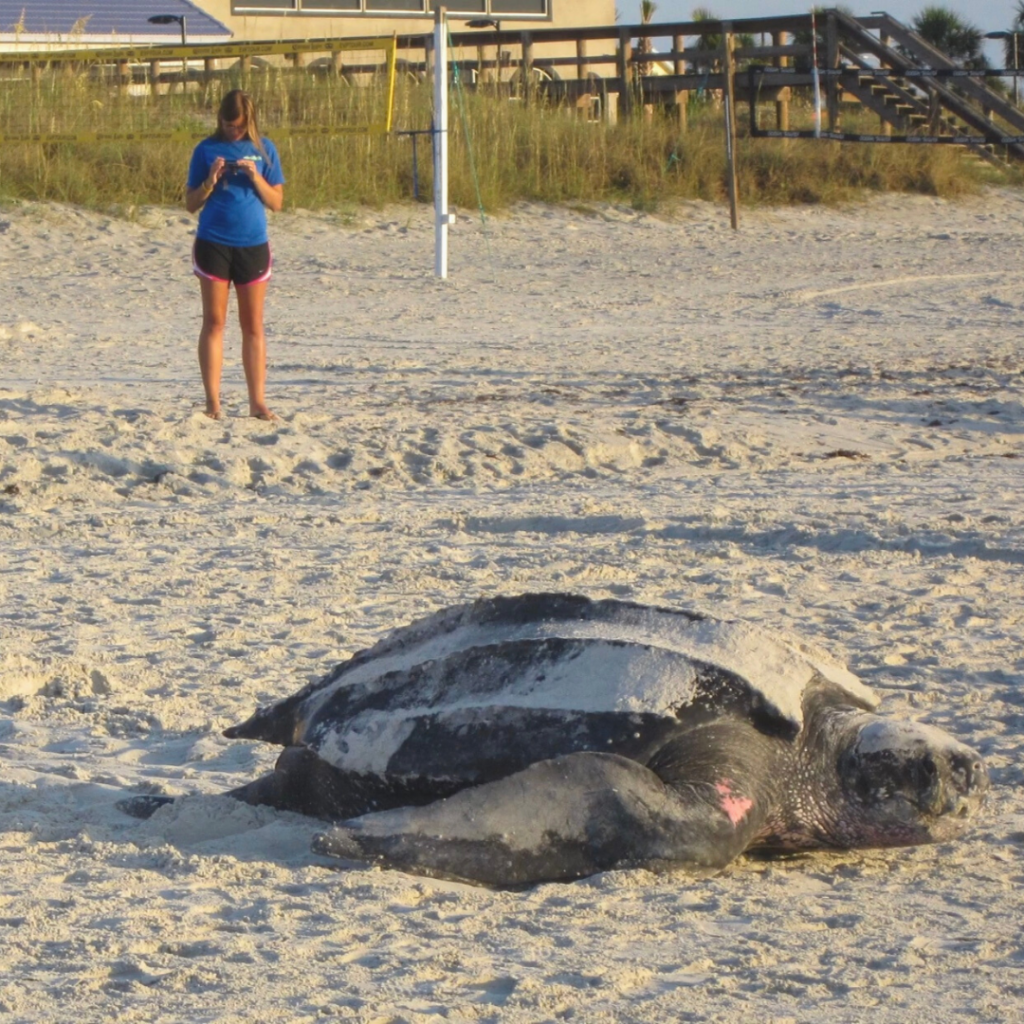HOW YOU CAN PROTECT SEA TURTLE NESTING HABITATS

You’ll find helpful signs as you enter the beaches that are monitored by BSTP. They include important contact information along with these friendly reminders:
- Do not touch or interfere with nesting turtles, eggs, or hatchlings.
- Do not disturb nests or markers.
- Turn off all lights visible from the beach, including lamps, house lights, flashlights, and camera flashes.
- Balloons and plastic bags are harmful to sea turtles and other wildlife.
- Remove all items from the beach at night.
- Fill in all holes. Sea turtles can easily get trapped.
- Keep beaches #CleanDarkFlat.
LOCAL TURTLES

Loggerhead Sea Turtles
- Scientific Name: Caretta caretta
- Size and Weight: Adult females have a shell length of 2.5 to 3.5 feet and weigh 155-375 lbs. Adult males weigh less.
- Diet: Jellies, sponges, and hard-shelled invertebrates
- Nest average: 100-126 eggs
- Number of Nests: Average female makes three to six nests per season, separated by two-week intervals
- Unique Trait: Loggerheads have powerful jaws. Adults can bite with a force of nearly 500 lbs

Green Sea Turtles
- Scientific Name: Chelonia mydas
- Size and Weight: Adult females have a shell length of 3 to 4 feet and weigh 240-420 lbs. Adult males weigh less.
- Diet: Seagrasses and algae
- Nest average: 115 eggs
- Number of Nests: Green sea turtles nest at intervals of about every two years. The average female makes three to five nests per season.
- Unique Trait: Greens swim fast for a turtle. A juvenile can swim up to 13 MPH for short stretches.

Leatherback Sea Turtles
- Scientific Name: Dermochelys coriacea
- Size and Weight: Adult females have a shell length of 4 to 6 feet and weigh 660-1,100 lbs. Adult males weigh less.
- Diet: Jelly animals including jellyfish, comb jellies, and pelagic tunicates
- Nest average: 80 eggs
- Number of Nests: Average female makes approximately four to seven nests at 10-day intervals.
- Unique Trait: Leatherbacks are more like marine mammals and share more traits with them than they do with reptiles.
THREATS TO SEA TURTLES
- Loss of nesting habitat.
- Disorientation from artificial light.
- By-catch in shrimp trawls.
- Ingestion of plastics, balloons, ribbon, and other debris is mistaken for food.
- Collision with vessels and injuries from boat propellers.
- Obstacles on the beach that prevent nesting.
- Poaching.
THREATS TO HATCHLINGS
- Disorientation from artificial light.
- Nest predation by animals and human vandals.
- Post-emergent predation by birds, crabs, and marine life.
- Obstacles on the beach that can trap hatchlings.
